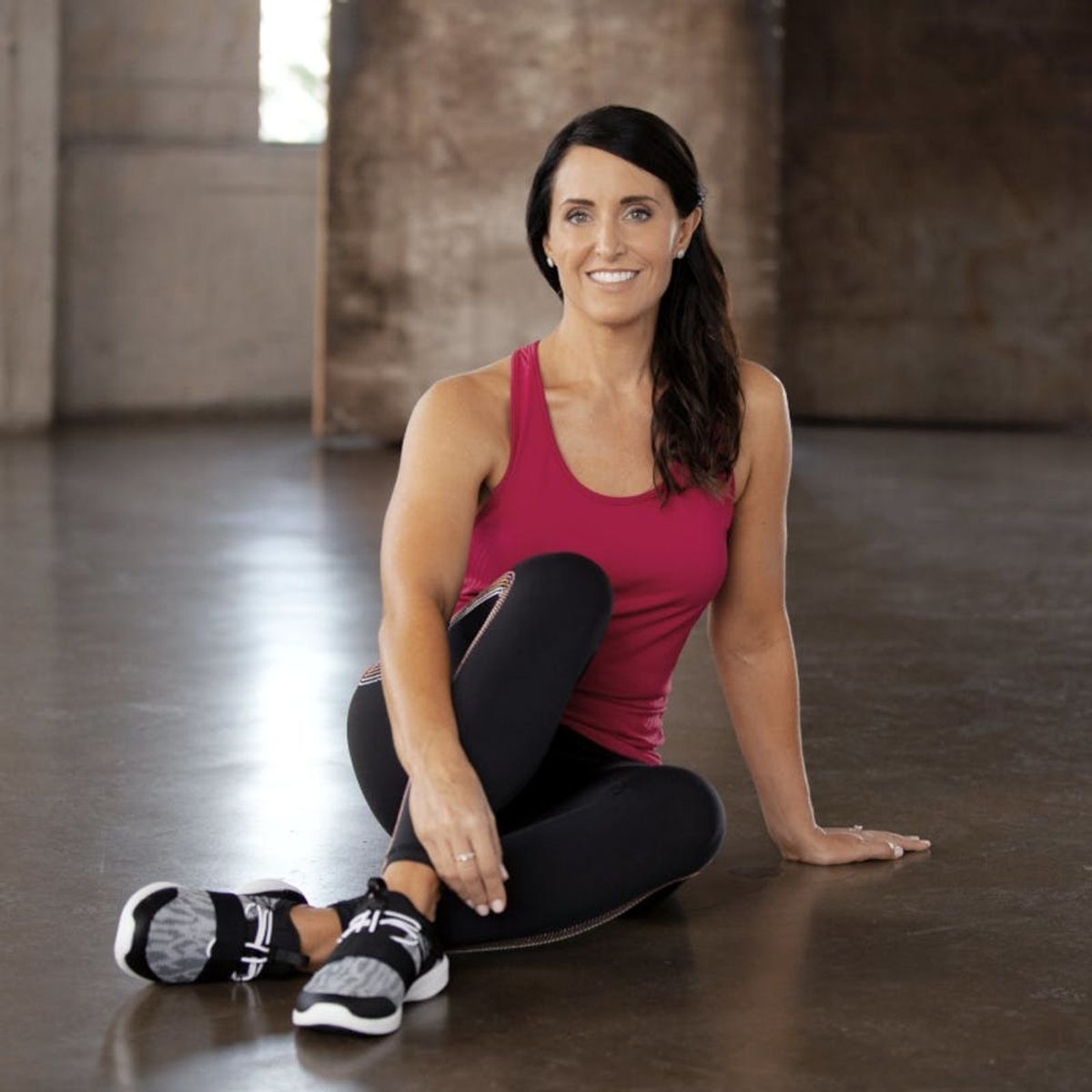Only a few minutes can lead to big benefits.
Why Foam Rolling Is What Your Workout Routine Is Missing

Sure, you’ve switched up your exercise routine to include restorative practices like yoga or stretching to see better results or help your body heal. But have you made a regular practice of foam rolling yet? If you think it’s just for serious athletes, you may want to reconsider. People who foam roll regularly note improved performance, the ability to get deeper into stretches, increased flexibility, and better workout results. Even more, using a roller for just a few minutes a few times a week can help prevent injury from strain or overuse.
“Personally, I use a foam roller any time I’m doing a cardio workout (such as running or spinning),” agrees celeb trainer Juliet Kaska. “I try to always foam roll out my legs before these types of workouts, especially my IT band because I’m prone to IT syndrome. Recently, in January, I didn’t stick with my usual foam rolling routine before a treadmill boot camp workout class and I ended up injured. I had to miss eight weeks of class after that.” Rolling, Kaska explains, specifically helps her clients release tightness and increase range of motion (especially for hip and knee flexion), and it can even reduce inflammation after a hardcore cardio sesh. “Foam rolling is really good for releasing tension by rolling out the knots that accumulate throughout our body from stress, misuse, and physical activity. Plus, it improves circulation, can help reduce [the appearance of] cellulite, and feels so darn good. I try to get my clients into a foam rolling routine that they can do before our sessions.”

It’s not just a sometimes activity, either. Explains Kaska, “I design each for each person’s needs and recommend foam rolling five to seven days a week. I suggest rolling in the morning and at night, whenever possible.” When we asked Kaska to clue us in on how she offers recommendations and creates these personalized routines, she gave us a few examples of where to start foam rolling to target specific issues you might be having.
1. Tight Hips: If you’re someone who sits all day or has tight hips, Kaska recommends a specific foam rolling exercise that’ll help you soften the fascia and increase circulation in your hips. “Sit perpendicularly on top of the foam roller with your feet on the ground, and keep your hands on the ground behind the roller with your arms straight. Next, cross your right ankle over your left knee and turn all of your body weight into/onto your right glute/hip. Roll on this area in a slow kneading way (rather than fast rolling) for at least 90 seconds to two minutes. When you’re done, switch to the other side.”
2. Posture Problems: Do you struggle with your posture or have poor alignment? Certain conditions can make standing up straight tough — or even painful. “If your shoulders roll forward, I recommend laying on a foam roller with your spine lined up on the length of the roller (tailbone to head on roller). Keep your feet on the ground about hip-width apart, and extend your arms out to the side in a T-position with your palms facing up. Stay laying in this position for 90 seconds to two minutes. This exercise will gently press on the back of your body to help you open up the front of your body.”
3. Alignment Issues: Kaska suggests her clients foam roll before every workout to help with alignment, which encourages proper form for any kind of exercise. “If you’re not in good alignment, you’re at risk for injury,” she explains. “Just the same, it’s good to foam roll after a workout — especially something like a HIIT workout — because it helps your body with circulation.” According to Kaska, gently rolling over affected areas will help move lactic acid built up in your muscles to reduce inflammation, muscle soreness, and feelings of tightness. “Some studies have shown that foam rolling after exercise can reduce recovery time,” she shares.
RELATED: These 6 Moves Will Strengthen and Tone Your Entire Legs and Butt
(Photo via Juliet Kaska)











